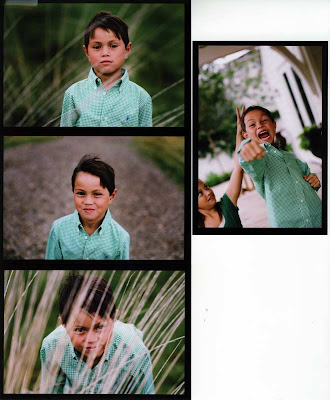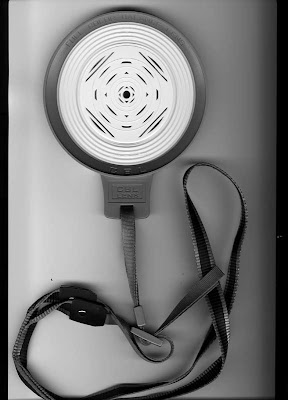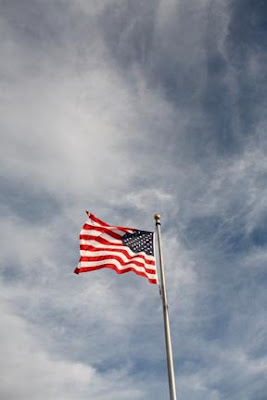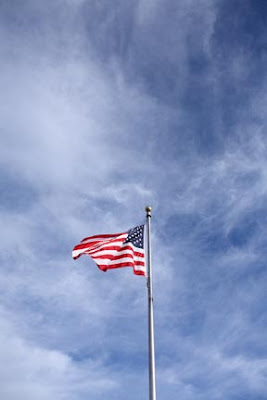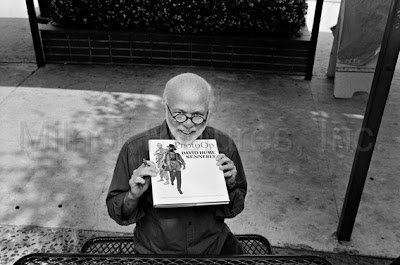



As the photo-world changes around us it is easy to see the differences in not only our photo-society, but also the photographers that inhabit this world. Our industry, in some ways, is a reflection of society's attention span, and with the near-overload of visual stimulation, the average attention span has been reduced to nearly nothing. Take for example the average time a person spends in front of a painting at a museum, around four seconds, and you learn where we are headed.
Consequently, the idea of a legacy, of depth in our work has also been altered. In the "Old Days," magazines like The National Geographic had seemingly endless assignment times and photographers worked for YEARS on projects before they were considered worthy of attention and consideration. Today ushers in the micro-assignment, the two-day photo-essay and the first-year photo student who thinks their work is instantly relevant.
Recently, due to
Canon USA's Explorers of Light program and the photography department at
Orange Coast College, I was able to take a step back into the past and spend a few hours with a photographer who is a perfect representation of the industry of old. David Hume Kennerly is by no means retired, and continues to build on his legendary archive, but is also a perfect example of someone with depth and a lasting legacy of imagery that will, chances are, never be duplicated in the "modern age."
Kennerly, if you don't already know the name, is perhaps most widely known as the personal photographer of former president Gerald Ford, but Kennerly's history goes way beyond this period of his life.
His career began at age 14, and catapulted him into the center of most of the memorable events of the 1960's, 1970's and beyond. The night after shooting the Ali-Frazier fight in New York, on the eve of his 21st birthday, he boarded a flight for Vietnam where he was to spend roughly the next two years of his life. Vietnam, as it did for most journalists to witness this war, changed Kennerly's life. He left Vietnam older, wiser and with a Pulitzer Prize for his efforts.
Back in civilian life Kennerly was asked to be the personal photographer for Gerald Ford, a job he accepted on two conditions: he only reported to the president directly, and he requested total access, anywhere at anytime. He was granted both and immediately began to make pictures that would forever change history and how photographers covered the president. Just a sidenote...we have not seen coverage like this since, and probably never will. In fact, the subsequent press secretary for then president Carter said when asked about who the photographer would be said, "Well, I know we are not going to have another Kennerly running around."
The efforts of his time with Ford have recently been published in
"Extraordinary Circumstances" Post-Ford, Kennerly continued to cover major news events for publications such as Time and Newsweek.
During his lecture at OCC, Kennerly spoke in a relaxed but focused manor. I've been to MANY lectures, and I have to say, he is really good, AND, Kennerly is one of the few photographers out there that could speak to high school students or a senior citizen group and totally pull it off. His work stands up over time.
He described his work as being simple, but I'm not sure that is quite the right word. In some ways, compared to the tilted frame, overly complex, somewhat overdone images of today, you might look at Kennerly's images and think they look simple, but I see a skill level that surpasses most photographers working today. Remember, the bulk of these images were done on "stoneage" equipment, manual focus, meter/no meter,etc. They were tack sharp, exposed correctly, AND, they were probably made in ones and twos, not thirties and forties as we make many images of today.
Most people do not spend their days analyzing images, and sometimes the pictures that end up running today are so sophisticated it is clear they are intended to influence only a tiny portion of the viewership. I think it is good that pictures like this are created and used, but sometimes you have to ask "Who are we trying to reach?" Are we trying to win an arts award or are we trying to educate our viewers. Let's call these thick images and thin images. Kennerly's pictures are thick.
On a sidenote, I first met Kennerly when I worked for Kodak, and ended up being the van driver for his workshop class at the Eddie Adams Workshop in New York. It was Kennerly, an editor from Newsweek, a bus full of rabid workshop students and me. Was it fun? Yes, but the hours SUCKED and I didn't get to shoot anything. Good news, we didn't lose any of the students.
In short, if you get a chance to hear this guy lecture, make the effort to go. You will get a chance to see one of the rare individuals who has managed to survive, reinvent, continue to make pictures and enjoy photography as much today as he did when he was 14.


















